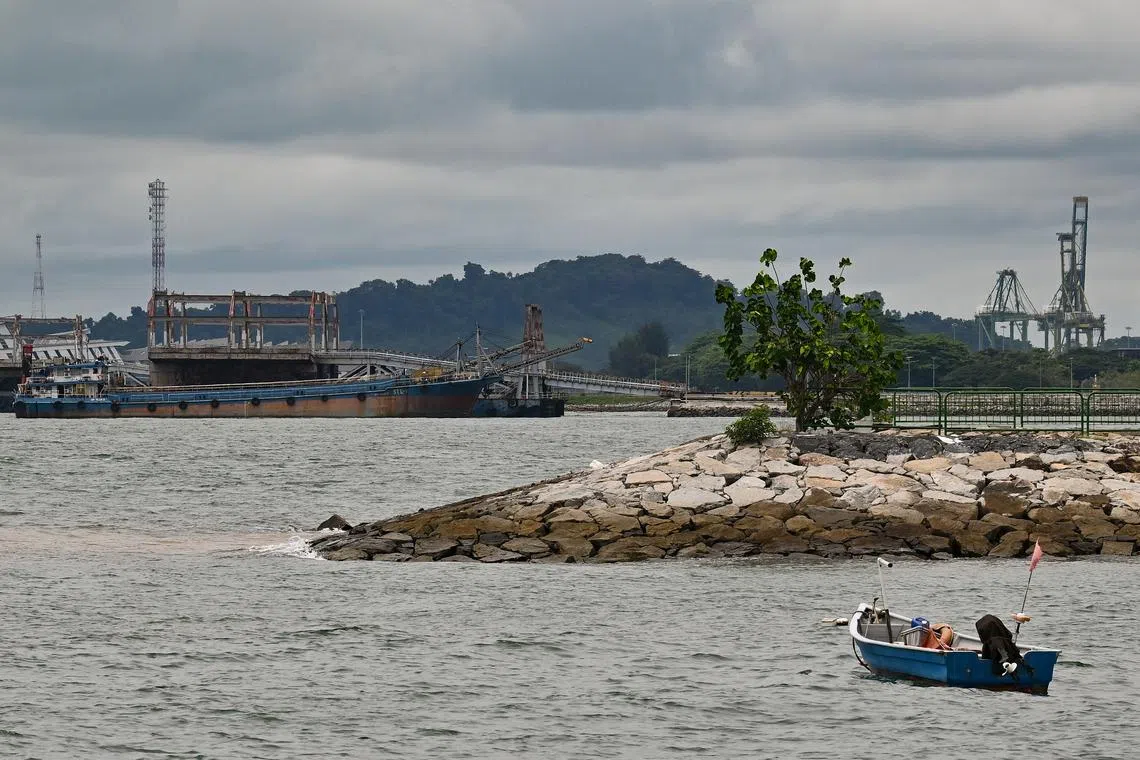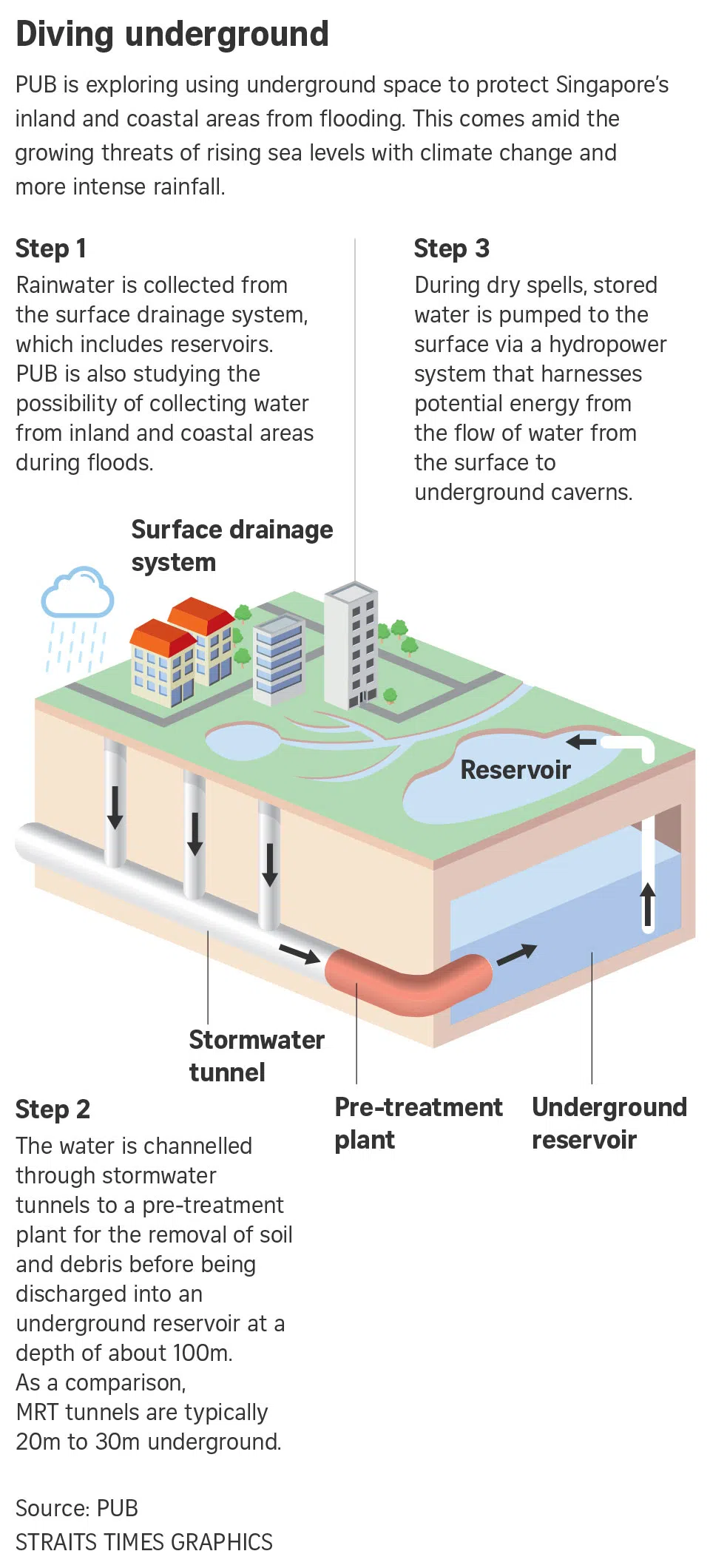PUB explores underground space to protect Singapore against rising sea levels
Sign up now: Get ST's newsletters delivered to your inbox

By the end of this century, the average sea level surrounding Singapore could rise by up to 5m.
PHOTO: LIM YAOHUI
Follow topic:
SINGAPORE – National water agency PUB will explore the use of underground space to defend Singapore against rising sea levels amid climate change and more intense rainfall.
Responding to queries from The Straits Times, the agency said last Thursday that a study to assess the feasibility of using an underground drainage and reservoir system to combat inland and coastal flooding will start in 2023.
By the end of this century, the average sea level surrounding Singapore could rise by up to 5m due to the combined effects of climate change and other factors such as storm surges and tidal activity.
This means about 30 per cent of Singapore will be vulnerable to going underwater.
Findings from the study will complement ongoing and planned studies looking at how different segments of Singapore’s coastline can be better protected from going underwater.
These could support future coastal pumping stations, PUB said. Such stations pump flood waters accumulated in low-lying areas into the sea.
The study, which relies on available geological and engineering data, will be completed in 2025, the agency said, noting that no fieldwork is expected to take place.
PUB did not give details on where the integrated underground reservoir system will be located.
The ambition to build the underground system to expand the island’s water storage capacity and free up surface space was announced in 2015.
Such subterranean facilities, advocated by experts to combat the effects of climate change, will enhance Singapore’s resilience during droughts by storing excess water and releasing it when needed.
Dr Cecilia Tortajada, an adjunct senior research fellow at the Lee Kuan Yew School of Public Policy’s Institute of Water Policy, said the initiative is similar to other such underground projects already in place in other countries to mitigate the threat of climate change and flooding.
Tokyo, for example, has massive underground structures to store excess flood waters and release them once the danger of flooding has passed, she said.
Dr Tortajada added that for Singapore to build such massive underground water retention structures, it would need to ensure that the quality of water stored can be preserved over long periods to avoid contamination.
PUB’s proposed integrated system will likely have three key components: tunnels to channel stormwater, underground reservoir caverns for water storage, and a hydropower system that will run on clean energy to pump water back to the surface when needed. This power will come from potential energy harnessed from the flow of surface water to the caverns.

Currently, there is an underground tank at the Singapore Botanic Gardens that can contain stormwater equivalent in volume to 15 Olympic-size pools from drains in Holland Road during heavy downpours.
PUB expects the completion of a similar tank in Jalan Besar in 2025.


